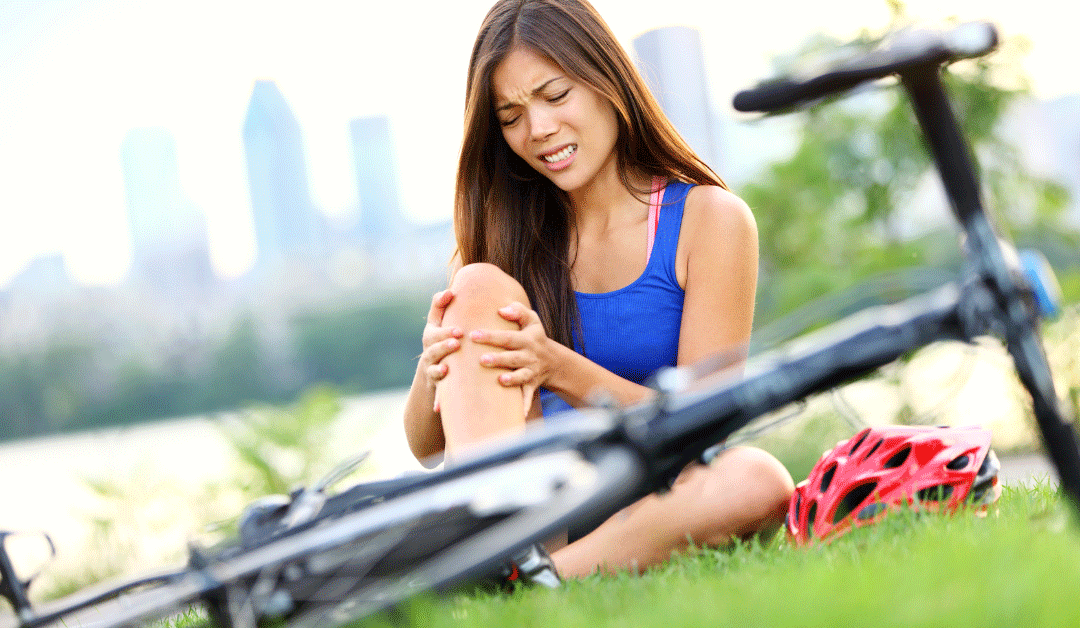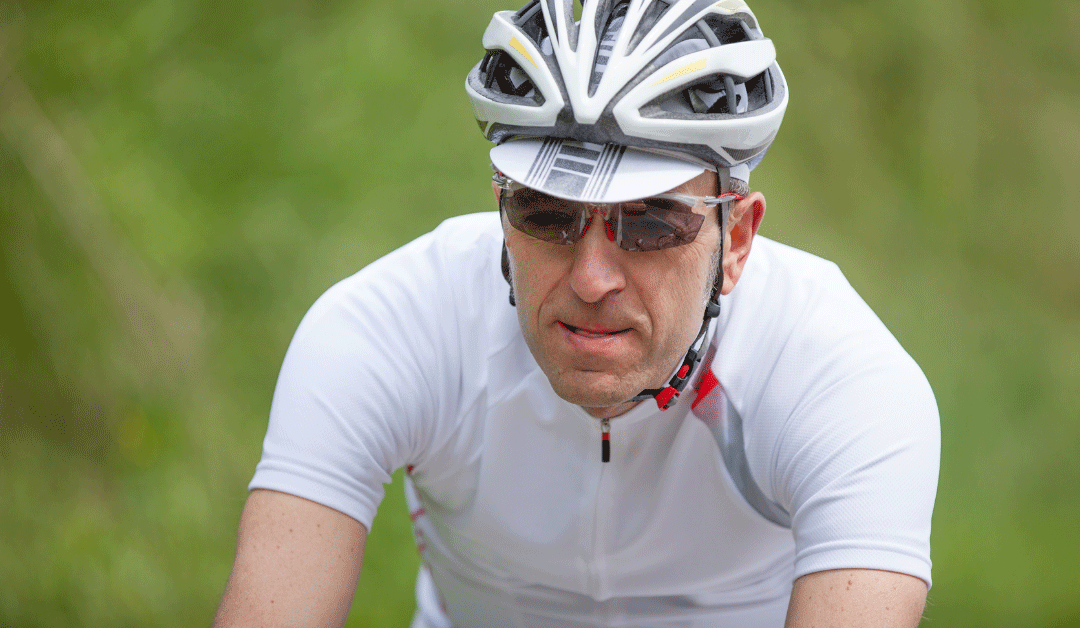Cycling is a great way to keep healthy and active, especially given its low impact on the spine. But as with any new exercise, cycling safety and injury prevention is paramount. In this article, we’ll discuss common cycling injuries and ways to prevent or treat them.
Common Cycling Injuries
Chronic neck pain, lower back pain or knee pain are common cycling injuries you need to be aware of as they can affect not only your ability to ride, but day-to-day living as well. Many of these injuries can be avoided by ensuring the correct bike fit.
Chronic Knee Pain

If you’re experiencing continuous knee pain, you may be suffering from anterior or posterior knee pain, which is due to having the incorrect saddle position. Another knee injury you need to look out for is a tight IT band, which affects the muscle on the outer knee.
Common treatments for knee pain include massage and foam rollers on the affected area in conjunction with taping the knee to allow it to heal.
Neck Pain

You may experience a stiff neck while cycling due to the length of time you spend on the bike and poor posture. While most neck pain can be effectively treated with regular heat or ice packs and stretches, you need to watch out for associated numbness or increased pain – particularly two weeks after injury.
Lower Back Pain

Core training, improving posture and ensuring a proper bike fit are the best prevention for lower back pain. Recovery is tailored to the individual, including rest days, decreasing mileage by up to 40% and cross training.
Physical Fitness
Muscle strain is probably one of the most common cycling injuries you’re likely to experience when riding a bike. And given that muscle strain caused by cycling can be a lack of physical fitness, making sure you’re in peak condition before cycling is one of the main ways you can avoid common cycling injuries associated with muscle strain.
It’s important not to over-do it. Engage in strength training to improve your core and flexibility, if necessary. If you push yourself too hard before you even get started, you can end up causing achilles tendonitis, back and neck pain, as well as serious injuries to your hamstring and quad muscles.
To avoid these common cycling injuries, visit our physiotherapy team to learn the right stretches and warm ups you should complete before riding your bike.
Maintaining Your Posture
Lessening the weight on your hands by relaxing your elbows may reduce any hand or wrist pain, and thus avoid more numbness, tingling and other nerve pain or damage.
One of the key indicators that you are using the incorrect posture while cycling is the level of comfort you feel. If you’re constantly shifting and changing position while riding, it indicates your posture is incorrect, and you need to fix it.
Key Tips to Remember When Riding on the Road:
- Your head and eyes should be focused forward, in the direction you’re going. Tuck your chin in and back.
- Your pelvis should remain still, not rock side to side. If you have movement, adjust your saddle height.
- Your spine should be in a neutral position, so your hips aren’t too far forward or backwards.
- The balls of your feet should be aligned with the spindle of your pedal; your knee should be in line with your foot.

SPHC Bike Fit Service
We have cycling specialists at Sandgate Physical Health Clinic who understand the problems cyclists face and can help with a professional Bike Fit. A Bike Fit will improve your pedalling efficiency, help you reach your cycling goals faster, and keep you free from pain and injury! Read More and call to book your Bike Fit.
For any further questions, or to get treatment for a cycling-related injury, book an appointment today!

